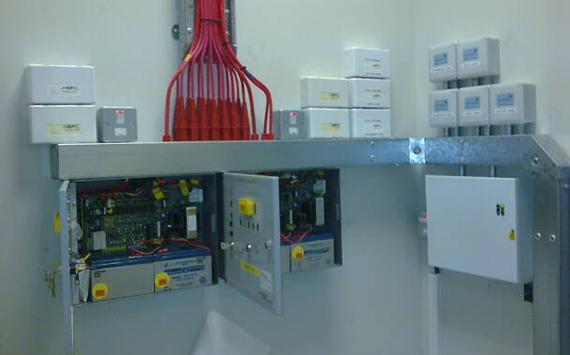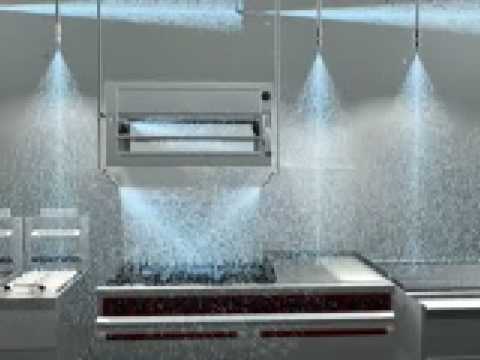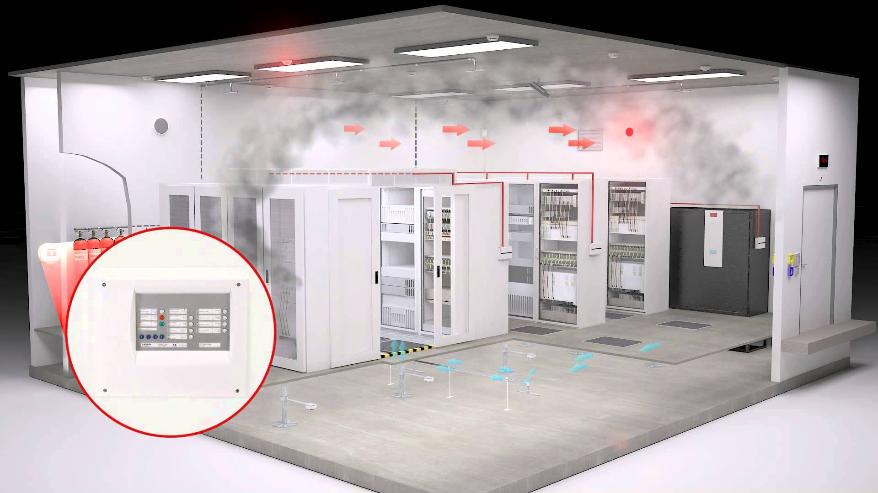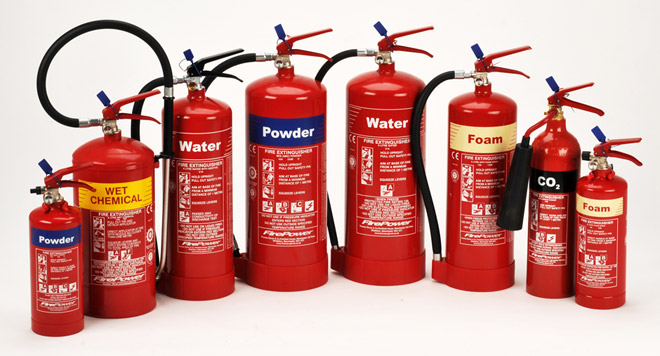
Welcome to DFSS fire & security
DFSS is a national provider of fire and security services, dedicated to protecting people, property and assets Australia wide.
We specialise in a full range of services from the design, install and commissioning of fire protection and security systems, to testing and compliance in accordance with the relevant legislation and building codes as well as providing service and maintenance to existing systems.
An added benefit to our customers is our access to and expertise in a wide range of fire systems and products. As we are brand agnostic, we have experience in servicing multiple brands and can also provide our customers with access to fire protection products and systems from a variety of manufacturers. In addition to this, our advice and recommendations will also be based on what is most suitable for our customers according to their system requirements rather than recommendations based on brand alliances. Here at Spectrum, we not only offer you convenience, we also offer you choice.
Combined with our diverse capabilities is our underlying philosophy to continuously deliver excellence in customer service. At DFSS we understand the growing need for you to maximise efficiencies and reduce costs, while having the convenience of dealing with a single point of contact for all your building fire and security needs. Our objective is to make this happen by working closely with you to devise solutions that that offer more than just the standard package.
With over 300 qualified and experienced personnel servicing hundreds of clients and thousands of sites nationwide you can rely on us to keep your building and business safe.

Fire prevention
The best fire protection is prevention and passive fire systems and fire doors are a cost effective approach to limiting the spread of fire and smoke within a building or facility. A passive fire system compartmentalises the building and prevents or slows the spread of fire from the room where it originated to other areas in the building. This in turn helps limit building damage and provides more time for occupants to evacuate the building or reach an area of refuge in the event of an emergency.
These systems are typically used in conjunction with a detection and protection systems to achieve a suitably comprehensive life safety system.
The purpose of fire doors include:
- Protect property by limiting damage in case of fire.
- Make a building safer to occupy.
- Close an opening in a firewall.
Passive systems are used wherever services such as pipes, ducts or cables penetrate a fire rated barrier (walls, floors or ceilings). In these situations, the system must be sealed in such a manner that the fire resistance level or rating of the element of construction is maintained. Passive products and systems are used to close off gaps in floors and walls, around cables, pipes and ducts and in control joints.
DFSS provides a comprehensive range of fire doors and passive systems, supported by design and maintenance services to ensure that the fire resistance rating of the construction and the system is maintained.
Fire detection
The early detection of fire plays a critical role in protecting the safety of your occupants, staff and potential emergency response personnel as well as minimizing the loss, damage and downtime of your business.
A fire detection system is designed to detect fire and combustion products in an emergency situation and alert building occupants to initiate evacuation where necessary. The type of fire detection system used in your building should be based on your fire safety requirements, which can be determined through a risk assessment of your building or facility.
When selecting a fire safety system, you must also consider the ongoing cost and commitment that will be required over the life of the system. The Australian Fire Code mandates that regular Inspection, Testing, Repair and Maintenance on Fire Alarm and Emergency Voice Communication Systems be undertaken and completed by qualified technicians on an annual basis.
At Donnstein Fire & Security, we offer a range of Fire Detection systems including:
- Conventional heat, smoke and flame detection
- Analogue addressable heat, smoke and flame detection
- High-sensitivity air sampling detectors
Detection devices, which we provide, include:
- Heat Detectors: spot and line heat detection
- Smoke Detectors: photoelectric, ionisation and multi-criteria
- Flame Detectors: ultraviolet, infrared, dual spectrum and triple infrared
- Pull Stations
- Audible Alarm Devices such as Bells, Horns or Speakers in the case of Voice Communication Systems
Spectrum Fire & Security also provides a comprehensive list of services including:
- Inspections
- Testing
- Service & Maintenance
- Remedial repair work to correct deficiencies in existing systems
- 24/7 emergency service calls
Our technicians are certified under the Australian Fire Code and are qualified to carry out inspection, testing, repairs and maintenance on fire safety systems and devices in accordance with AS 1851 and the relevant Australian Building Codes. We also provide internal training on a monthly basis to ensure that our technicians are up-to-date with any changes or additions to all relevant codes of practice relating to fire safety and protection.
Fire alarms & notifications
Efmergency warning and evacuation systems are a critical element of every fire safety system. These fire alarm systems are designed to notify building occupants and emergency public responders (either directly or via a monitoring service) in the event of an emergency. This procedure may be initiated automatically by a fire alarm system, fire sprinkler system or manually by a break glass call point.
The Emergency Warning Systems can be categorized as either:
- A Building Occupant Warning Systems (BOWS)
- A ‘Sound Systems and Intercom Systems for Emergency Purposes’, previously referred to as an Emergency Warning and Intercommunication System (EWIS)
An Emergency Warning System will consist of the following:
- A manual and automatic alarm activation
- An alert signal, which will include an audible signal, or a combination of audible and visible signals (lights/strobes) in areas of high noise. After a pre-determined period of time, the system will automatically switch to an ‘Evacuation’ signal.
- An evacuation signal, which will include an audible signal, or combination of audible and visible signals, along with automated voice messages instructing the necessary evacuation procedure.
- Ability to allow authorized Fire Wardens or emergency responders to take control and broadcast a verbal emergency public address to all or selected areas of the building via the PA loudspeakers.
- Ability to take manual control of the system if required by authorized Fire Wardens or emergency public responders
- Ability to communicate to one or more Wardens via the Warden Intercommunication Points
The main point of difference between a Building Occupant Warning Systems and an Emergency Warning and Intercommunication System is the ability to engage in two-way communication via the Warden Intercommunication Points (WIPs). The Building Occupant Warning System does not have this functionality, whereas the Emergency Warning and Intercommunication System does.
The Building Code of South Africa specifies that a Building Occupant Warning Systems needs to be provided when the code requires a smoke hazard management system to be installed in the building or when a required sprinkler system is installed in the building (which must also be connected to and be able to activate the Building Occupant Warning System).
Section 9 of AS 1851 (2005), specifies the maintenance requirements for a Building Occupant Warning System.
A Sound System & Intercom System for emergency purposes (also known as a Emergency Warning and Intercommunication System) needs to be installed in instances where the building satisfies one of the following conditions:
- A building with an effective height of more than 25m
- A Class 3 building have a rise of 2 storeys or more and used as a residential part of a school or accommodation for the aged, children or people with disabilities
- A Class 3 building used as a residential aged care building
- A Class 9a building having a floor area of more than 1000m2 or rise of more than 2 storeys
- A Class 9b building used as a school and having a rise of more than 3 storeys or used as a theatre, public hall or the like having a floor area of more than 1000m2 or a rise of more than 2 storeys.
Sound systems and Intercom systems for emergency purposes must be designed in accordance with the requirements of AS1670.4 and AS2220.

Fire suppression systems
Inf the event a fire does occur, the fire suppression system is vital in reducing property damage and loss of life. A fire suppression system encompasses a broad range of products and equipment including sprinkler systems, gas suppression systems and hydrant and hose reel systems. The starting point for choosing the right system for your requirements begins with a risk analysis of your building or facility.
Spectrum specialises in the design, install and service and maintenance of the full range of suppression systems, including:
- Sprinkler systems
- Water mist systems
- Foam systems
- Gaseous suppression systems
- Hydrant and hose reel systems
Fire Sprinkler Systems
Fire sprinkler systems are intended to actively provide a means to suppress or extinguish fire in an emergency situation. The four main types of sprinkler systems are:
- Wet systems: the most common and are typically found in office buildings, retail establishments and climate controlled warehouses. In wet systems, the water is constantly maintained in the sprinkler piping.
- Dry systems: designed for environments where the ambient temperature may be cold enough to freeze the water in the sprinkler piping, such as unheated buildings, parking garages and loading docks. In a dry pipe system, water is not present in the piping until the system is activated.
- Pre-action systems: typically used in areas where accidental activation is unacceptable due to the high value and irreplaceable nature of the equipment or content being protected, e.g. museums, data centres and libraries. A pre-action system is a combination of a wet, dry and deluge systems. It employs a double interlock system that requires the concurrent activation of a fire detector and also a sprinkler in order for water to be dispersed. When dormant the piping is filled with air similar to a dry system. The activation of a fire detector will open the pre-action valve allowing water to flow into the piping, effectively turning it into a wet system. The activation of a closed sprinkler will then allow the water to be dispersed simultaneously through all sprinklers over the protected area similar to a deluge system. Without the concurrent activation of both the detector and sprinkler, water will not be applied to the protected area.
- Deluge systems: commonly used in special hazard areas where rapid fire spread is a concern such as outdoor transformers and fuel loading racks. The system utilises open sprinkler heads that allows the all the sprinklers in the system to discharge water simultaneously over the entire hazard once a detection device has been activated e.g. a smoke detector.
Gas Suppression Systems
Gas suppression systems are commonly employed in areas that are highly volatile, critical or contain sensitive equipment where non-fire damage from water is as detrimental to the equipment or materials as fire.
A variety of suppression system agents are available to suit any application:
- Gaseous Systems (FM200 / Novec 1230 / Argonite / Proinert /CO2)
- Waterspray Systems (Medium and High Velocity)
- Pre-engineered Foam Systems / Wet Chemical / Dry Chemical Systems
- Foam Systems (Low / Medium / High Expansion)
- Explosion Detection / Suppression
Gas suppression systems can be used in:
- Computer server rooms
- Data processing and data storage centres
- Hospitals and medical centres
- Financial institutions
- Switch rooms
- Power generation plans
- Critical electronic infrastructure
- Gas turbine enclosures
- Diesel generator enclosures
- Lube oil tanks
- LPG storage tanks
- Process pumps
- Flammable liquid storage
- Transformers
- Substations
The main types of gas suppression systems include:
- Clean Agent Suppression Systems (FM200, NOVEC 1230, Argonite, Proinert): engineered to suppress fires and to protect assets without causing harm to people or the environment. They are safe to breathe and once discharged, extinguishes the fire rapidly leaving little to no residue resulting in reduced business downtime.
- Carbon Dioxide (CO2) Suppression Systems: extinguishes fire by removing the oxygen from the protected area. While they are environmentally safe and leave no residue they are not recommended for normally occupied areas because of the asphyxiating effect on people. CO2 systems are extremely effective for many industrial hazards including chemical storage areas, electric generating plants, transformer rooms, turbines, food manufacturing processes and semi conductor wet benches.
- Medium Velocity Waterspray Systems: mainly used for exposure protection from a fire elsewhere
- High Velocity Waterspray Systems: extinguishes a fire in heavier oils but emulsifying the oils
- Low Expansion Foam Systems: extinguishes a fire by producing a layer of foam over the surface of the fuel
- High Expansion Foam Systems: extinguishes a fire by producing a large volume of expanded foam to completed enclosure the risk
- Wet Chemical Systems: extinguishes a fire by reacting with the hot oil coating.
Hydrants & Hose Reels
Fire hydrant and hose reel systems are an installation of pipes, water tanks, pumps, hydrant outlets and/or hose reels in a building to provide a ready means by which a flow of water can be delivered in any part of the building for the purpose of fire fighting.
Due to the variety of fire suppression systems, it is important to ensure that you choose the right one for you building or facility requirements. Spectrum is high experienced in designing and installing a system to your needs and also integrating the system with the other components of your building’s fire safety and protection programme. We also provide annual inspection and testing as well as remedial repair work across a wide range of suppression systems to correct deficiencies in your suppression system, while maintaining it at an optimal level of operation.
Call us today on 1300 13 FIRE to discuss your system build requirements or to tailor a Preventative Maintenance Plan for your existing system.

Fire extinguishers
Portable fire extinguishers must be installed in all workplaces regardless of whether other fire protection measures are present. As an early response to a developing fire, the successful performance of a fire extinguisher depends on appropriate placement, proper maintenance, and trained users.
There are different types of extinguishers, each designed to extinguish a specific class of fire. They are selected according to the potential fire hazard, the construction and occupancy of the building, and the asset to be protected. It is important to have the right type of extinguisher to fight the fire risk for different areas of your premise to avoid potentially damaging the asset or equipment you are trying to protect and to minimise the chances of exacerbating the fire itself.
The different classes of extinguishers are:
- Class A – Ordinary Combustible Solids
Wood, paper, cloth, plastics, rubber, coal, carbon based compounds etc.
- Class B – Flammable & Combustible Liquids
Petrol, oil, paint, thinners, kerosene, alcohol, etc.
- Class C – Flammable Gases
L.P.G., Butane, Acetylene, Hydrogen, natural gas and Methane etc.
- Class D – Combustible Metals
Magnesium, aluminium, sodium or potassium etc.
- Class E – Electrically Energised Equipment
Computers, switchboards, power-boards, etc.

Emergency lighting
Exit and Emergency Lights are a critical part of the life safety system within a building and consists of lights units and illuminated exist signs used to guide occupants along a safe exit route in the case of an emergency.
Due to the nature of emergency lighting, it is normally required that they operate fully automatically and give illumination of a sufficiently high level to enable people to evacuate the premises safely.
The three main types of Emergency Lighting systems are:
- Non-maintained – the light units will only illuminate when connection to the main power supply fails
- Maintained – the light units are illuminated at all times using the same lamps for both normal and emergency operation
- Sustained – the light units are fitted with two sets of lamps, one connected to the main power supply and the other which operates from a battery supply in the event of a main power failure.
For maximum safety, emergency lights should be installed to cover the following areas:
- Each exit door
- Escape routes
- Intersections of corridors
- Outside each final exit and on external escape routes
- Emergency escape signs
- Stairways so that each flight receives adequate light
- Fire fighting equipment
- Fire alarm call points
As with all fire safety related equipment, emergency lighting is required to be inspected, tested and serviced at regular intervals in accordance with AS 1851 to ensure that all lights are functional in the case of an emergency. To test an emergency lighting system, we simulate a main power failure on the normal lighting circuit or individual lighting units, which will then force the system to operate using the battery supply. At Spectrum, we also sell and service multiple brands of emergency lighting and our technicians carry an extensive collection of batteries, bulbs and replacement parts so that we can fix your equipment the first time.
Design & installation
Designed with you in mind.
The design and installation of an effective fire protection system requires sound industry expertise, strong project management skills and highly trained field staff. At Spectrum we possess and offer these three critical elements as part of our specialist design and installation service.
We have the capability and capacity to create practical, cost-effective solutions for challenging environments, encompassed across a variety of sectors including commercial, industrial, government, health, education and telecommunications.
Unlike our competitors, we are brand agnostic, which means our expertise is not limited to one particular brand of product or system. Our field staff and project managers are well acquainted with a broad range of products and systems giving us the capability to offer expert advice based on your specific requirements rather than trying to fit your requirements into the specifications of a system from any given brand.
Whether it is a complex new installation or upgrades to an existing fire system, our design engineers and project managers will work closely with your contractors, architects and consultants to tailor an integrated solution for your facility. Our design process will begin with a survey of your building or facility to help determine the areas of risk. This will then be followed by a works programme outlining the materials, equipment and work processes required to design a solution to best manage those risks and how our activities will relate to the main works schedule.
Our installation team will then work to the agreed plans and specifications to install the components of your fire protection system and most importantly, ensure that all components are integrated correctly for the seamless operation of the overall system.